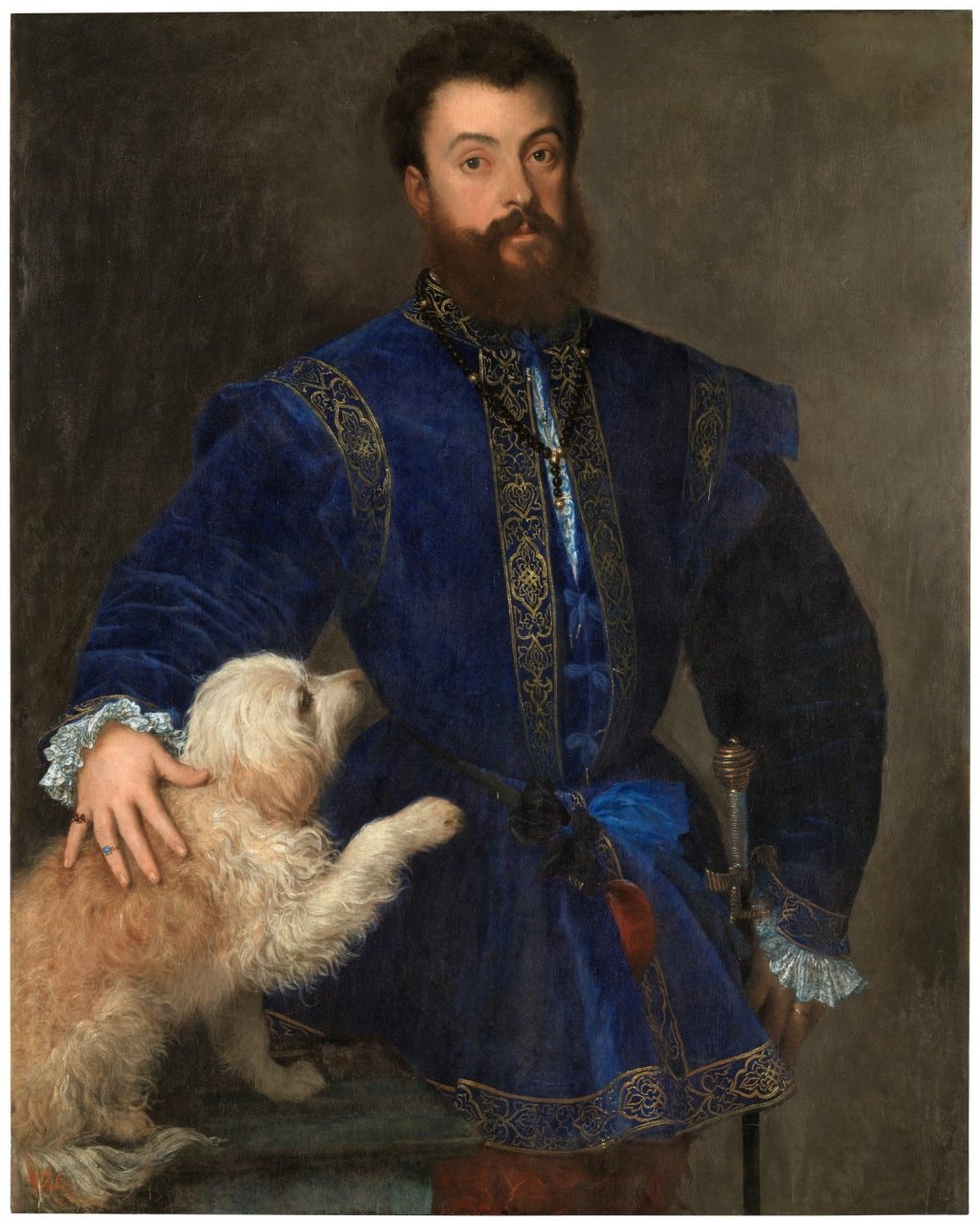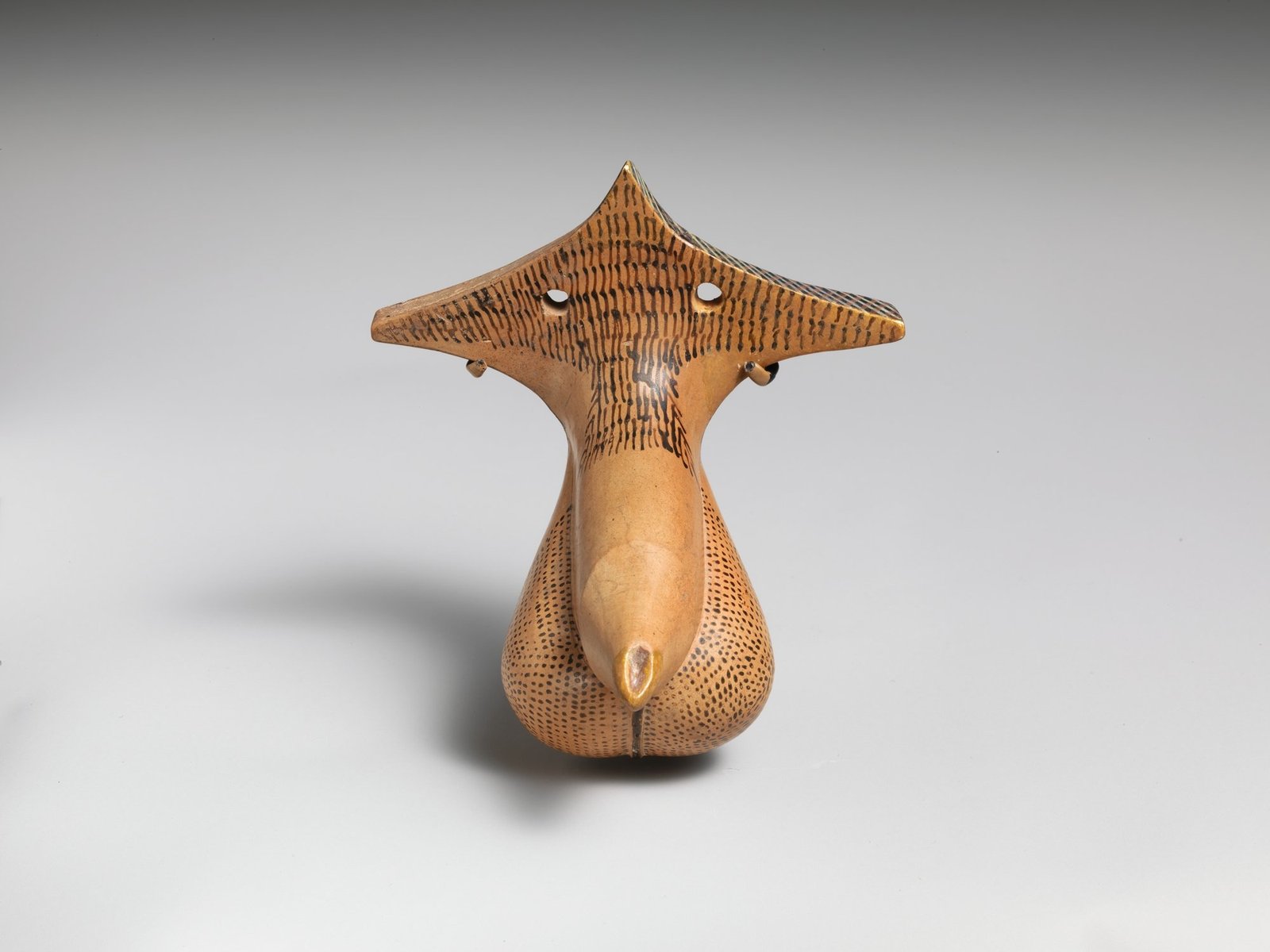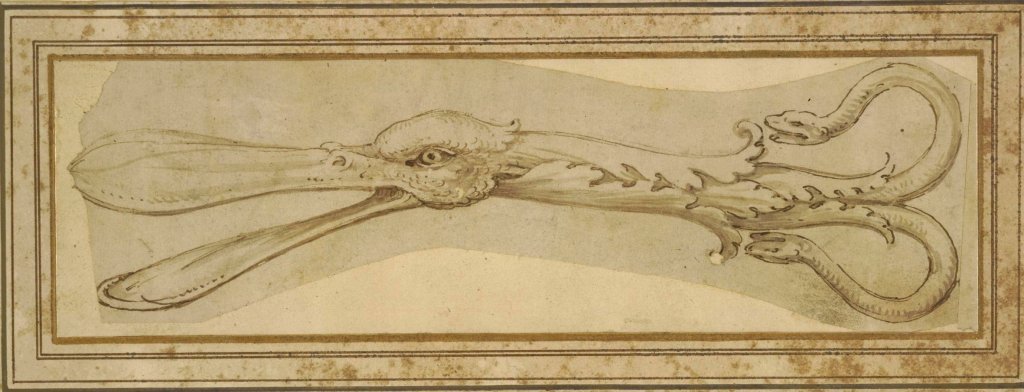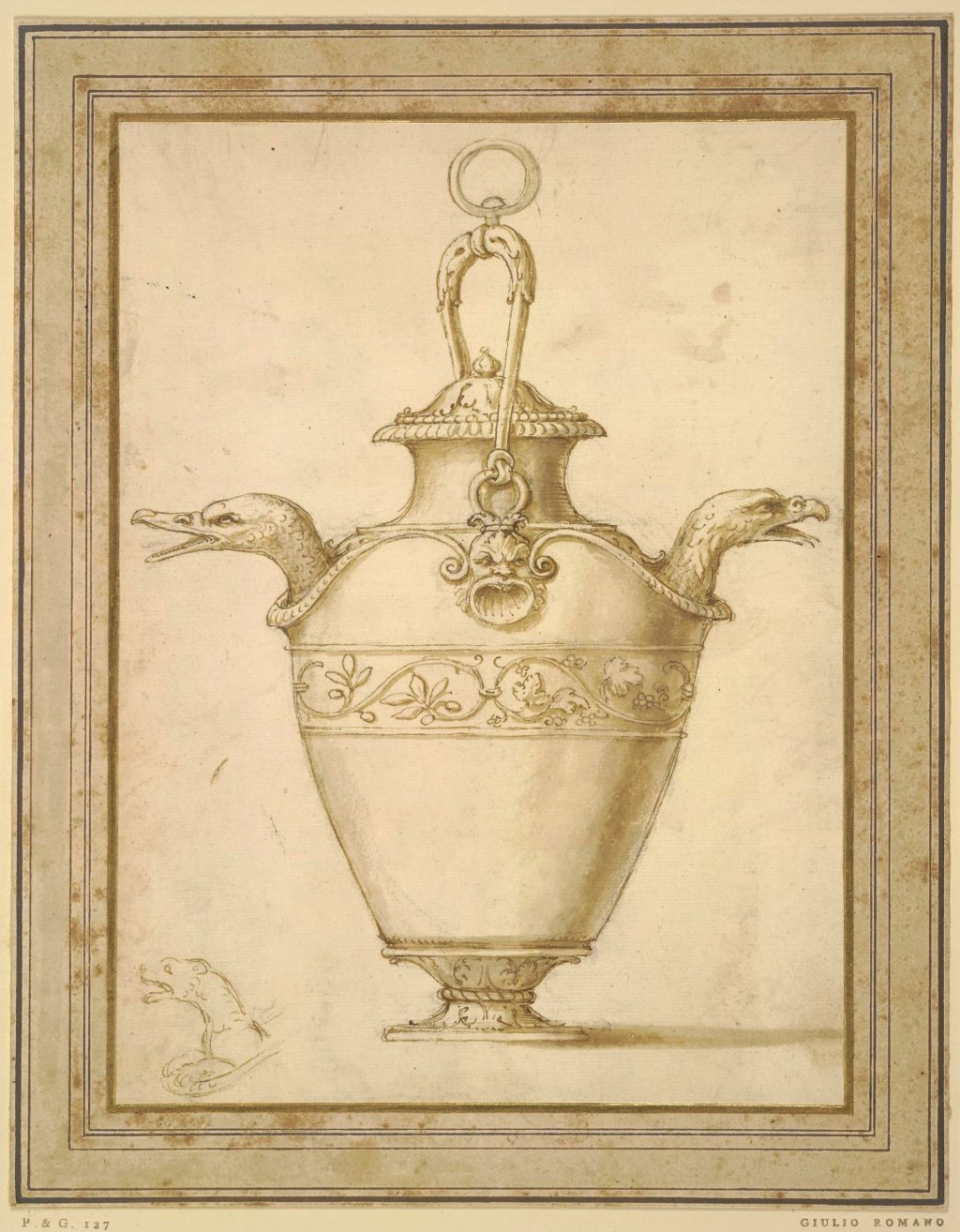On Giulio Romano’s tableware designs
Tableware designed by Giulio Romano invites us to re-consider the false binary between works of art and functional objects.
For a Renaissance prince dining utensils were far more powerful tools. The right tableware could tell every guest at the dinner table about its owner’s wealth, artistic knowledge, education, humour and status, all in one. The Gonzaga family of Mantua knew this better than most. Between 1524-1546, Federico Gonzaga II commissioned hundreds of silver tableware designs from the prestigious Roman artist – and former pupil of Raphael – Giulio Romano. Many of these highly complex designs were realised by goldsmiths (carefully overseen by Giulio Romano), and graced the tables at banquets of Federico Gonzaga II. Others were probably only displayed on a credenza, as a sort of aesthetic declaration of wealth and artistic mastery. Unfortunately, most of the finished products were eventually destroyed, and melted down into silver to try and financially aid the waning Gonzaga family; thus most of the designs remain only in drawings. By looking closely at some of these designs, we not only get a sense of Federico Gonzaga II’s own interests and lifestyle, we also gain a better understanding of Giulio Romano’s artistic fascination with invention and illusionism, primarily through blurring nature and artifice.

Giulio Romano’s tableware designs were invariably complicated. In fact, they were so intricate that they were almost impossible to produce as actual objects. The practical challenges were so significant that one Roman goldsmith, employed to realise an early design for Federico Gonzaga during Giulio Romano’s final days in Rome, endured such ‘great difficulty’ that he ultimately vowed to never work with him again (Beth Holman, ‘A Subtle Artifice’: Giulio Romano’s Salt Cellar with Satyrs for Federico II Gonzaga’, in Quaderni di Palazzo Te, no. 8, 2000, pp. 60-1). Giulio Romano was an artist who wanted to push the boundaries of imagination and invention, at the expense of functionality. This worked for Federico, too – he was able to own these extravagant objects. He did not need them to function as practical objects per se; he needed them to function as aesthetic declarations of wealth and artistic prestige. For guests at Federico’s court, being sat at a table with some of the most complex, bizarre and artistically skilled tableware was impressive in itself, but the fact that much of it was hardly useable would have made it even more impressive. There is perhaps a modern equivalent in the sheer excess of possessions in a family dynasty like the Kardashians – the objects in their Instagram photos rarely function on a practical level, but rather on an aesthetically impressive level. To own something expensive is one thing; to show yourself not even using it is another. Indeed, in Giulio Romano’s fresco of in the Palazzo Te’s Sala di Amore e Psiche, we see how a display of such tableware on a background credenza provides a highly ornamental backdrop.
Giulio Romano, Camera di Amore e Psiche, Palazzo Te, Mantova. © Comune di Mantova, Musei Civici.
But Giulio Romano goes beyond simply making decorative and elaborate tableware designs, and often includes strikingly humourous elements. To take just one example, in a highly finished drawing for a saltcellar design, Giulio Romano depicts two goats turning their heads in opposite directions to ‘lick’ the salt in the cellar supported above them. Immediately, he is making a pun on the object’s function, since goats are notoriously very fond of salt. More than this, however, is the drawing’s most immediate feature: an explicit view of a third goat’s rear in the middle of the sheet. The only visible parts of this middle goat are its crudely exposed anus and hanging udders. To include such vulgar imagery in a tableware design intended to be made of silver and used in the Mantuan court, is nothing short of outrageous. Even the process of commissioning a goldsmith to produce this design in precious metals seems rather audacious.

Clearly, Giulio Romano is having a bit of a joke, reflecting his wider tendency to combine luxurious imagery with vulgar visual jokes. It is a trait that references ancient Roman and Greek tableware, which was often made to entertain and amuse dinner guests with phallic imagery or visual innuendos.

The bawdy humour of Giulio Romano’s tableware designs was certainly appropriate for the infamously licentious Federico Gonzaga and his circle: Valerie Taylor notes the ‘provocative visual and tactile pleasure of handling or being served from vessels designed to titillate’ (Art and the Table in Sixteenth-Century Mantua’, in The Material Renaissance, eds. Michelle O’Malley and Evelyn Welch, Manchester, 2007, p. 178). Such designs remind us that humour was a very real part of much artistic production and reception during the Italian Renaissance, and should not be overlooked simply because – from today’s perspective – these works are by such revered (and seemingly always ‘serious’) artists.

Many visual jokes made by Giulio Romano in his tableware designs are found in his comic use of animal imagery. In one design, for example, he transforms a duck’s exaggeratedly large bill into a pair of prongs. By doing so, he invites viewers to re-imagine the opening and closing of a duck’s bill in the context of a relatively mundane household object. The object, a product of Giulio Romano’s imagination, therefore presents a brilliant fusion of nature and artifice which was sure to delight and amuse its beholders. Giulio Romano is neither only inventing an object, nor only drawing a duck: he is combining observation with imagination in a highly original way. For contemporaries with humanist interests like Federico Gonzaga II, aesthetic debates about the relationship between nature and artifice harked back to classical Roman authors such as Pliny the Elder, which made Giulio Romano’s designs as intellectually pleasing as they were visually.

Giulio Romano’s tableware designs emerged from richly layered artistic, intellectual and cultural contexts. They invite us to not only consider the significance of objects in art history, but to also re-consider the false binary between works of art and functional objects. We might begin to question the role of animal imagery within such contexts, for Giulio Romano shows a constant desire to metamorphose and (literally) objectify natural and animalistic forms, in line with a growing view of the natural world as an exploitable resource for human use. Indeed, Giulio Romano’s tableware designs are also symptomatic of an increasing materialistic European society which was growing rich through the brutal subjugation of indigenous people and natural ecosystems overseas. Even today, objects tell us far more about ourselves – and uncomfortable truths about our society – than we might first expect.
August 1, 2021
